The Red Kite (Milvus Milvus), with its majestic appearance and soaring flight, is a symbol of natural grace and beauty. However, the peaceful existence of these raptors is increasingly disrupted by the towering structures of wind turbines.
The Red Kite, like many other avian species, faces a multitude of challenges when it comes to coexisting with wind energy installations. This disruption raises critical questions about the potential consequences of renewable energy production on wildlife.
To understand why is the red kite bird disturbed by wind turbines, we delve into a complex web of factors, including collision risks, habitat displacement, behavioral disturbances, and ecological consequences.
By unraveling the reasons behind this disturbance, we gain insight into the broader implications of sustainable energy development on our delicate ecosystems and the species that call them home.
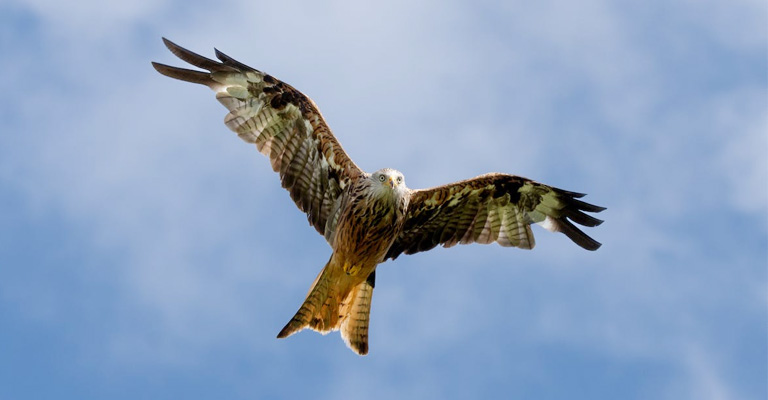
Why Is The Red Kite Bird Disturbed By Wind Turbines?
The Red Kite (Milvus Milvus), a majestic raptor native to parts of Europe, can be disturbed by wind turbines for several reasons, raising concerns about the impact of these renewable energy structures on bird populations.
Here are some key reasons why Red Kite birds are affected by wind turbines:
Collision Risk
Red Kites, like many birds of prey, are at risk of colliding with wind turbine blades during flight. Their soaring behavior often brings them into the same airspace as turbines, increasing the likelihood of fatal collisions.
Habitat Disruption
The installation and operation of wind turbines can disrupt Red Kite nesting and foraging habitats. Construction activities, habitat fragmentation, and noise associated with wind farms can drive these birds away from their traditional breeding and hunting grounds.
Barriers To Movement
Wind turbine arrays can create barriers for Red Kites and other birds that rely on wide-ranging movements. The presence of turbines can limit their ability to access essential resources, including food, water, and suitable roosting sites.
Disturbance During Breeding
Noise and vibrations generated by wind turbines can disturb Red Kite breeding behaviors. Nests may be abandoned due to constant disturbances, leading to decreased reproductive success.
Aerial Displacement
The presence of wind turbines can lead to changes in Red Kite flight patterns. These birds may alter their routes or avoid certain areas to minimize the risk of collisions, which can disrupt their natural behavior and energy expenditure.
Interference With Hunting
Wind turbines can impact the Red Kite’s hunting abilities. Turbine blades can deter prey species, like rodents, from open areas near the turbines, reducing the availability of food for these raptors.
Psychological Stress
The constant movement and noise generated by wind turbines can cause psychological stress in Red Kite populations. Prolonged exposure to such stressors can have adverse effects on their overall health and well-being.
The disturbance caused by wind turbines to Red Kite birds is a multifaceted issue that encompasses collision risks, habitat disruption, movement barriers, breeding disturbances, altered flight patterns, hunting interference, and psychological stress.
Balancing renewable energy goals with the preservation of avian species like the Red Kite requires careful planning and mitigation measures to minimize adverse impacts on these iconic raptors.
What Birds Are Most Affected By Wind Turbines?
Several bird species are particularly vulnerable to the adverse effects of wind turbines due to their behavior, habitat preferences, and flight patterns.
Here are some bird species that are among the most affected by wind turbines:
Golden Eagles (Aquila Chrysaetos)
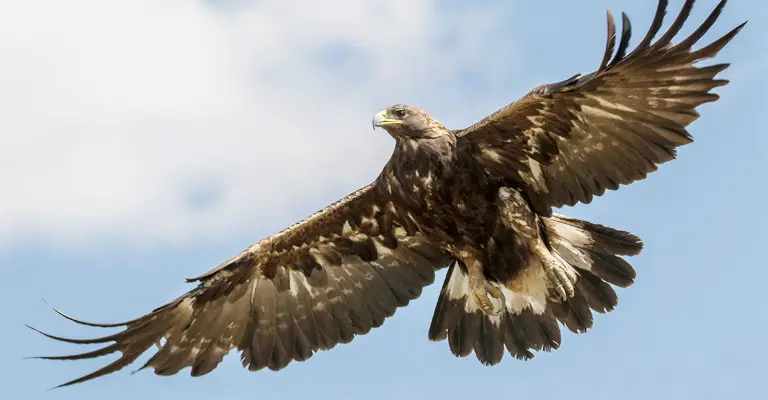
Golden Eagles are large raptors known for their soaring flight. They are at high risk of colliding with wind turbine blades, which can result in fatalities. Their slow reproductive rate makes any loss of individuals particularly concerning for their populations.
Bald Eagles (Haliaeetus Leucocephalus)
Bald Eagles, the national bird of the United States, are susceptible to wind turbine collisions, especially in areas where they overlap with wind farm development. This iconic species is protected under federal law, adding to the conservation concerns.
Red Kites (Milvus Milvus)
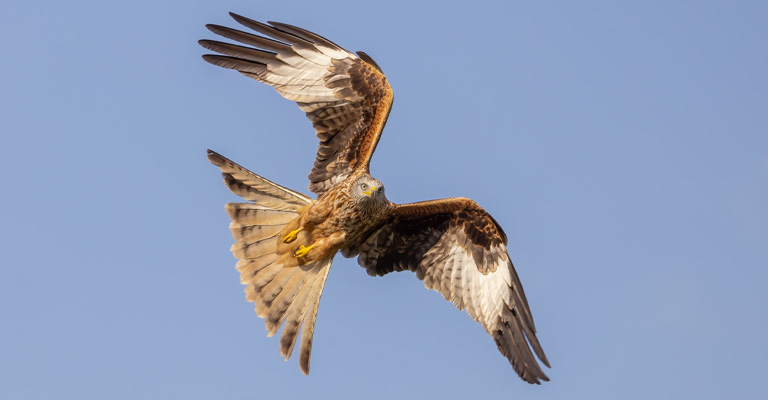
Red Kites are graceful raptors that often soar in open landscapes. They are highly affected by wind turbines, facing collision risks and habitat disruption. Their sensitivity to disturbances during breeding makes them particularly vulnerable.
California Condors (Gymnogyps Californianus)
California Condors are critically endangered, and their populations are highly monitored. Wind turbines pose a serious threat to these massive vultures, both through direct collisions and habitat fragmentation.
Whooping Cranes (Grus Americana)
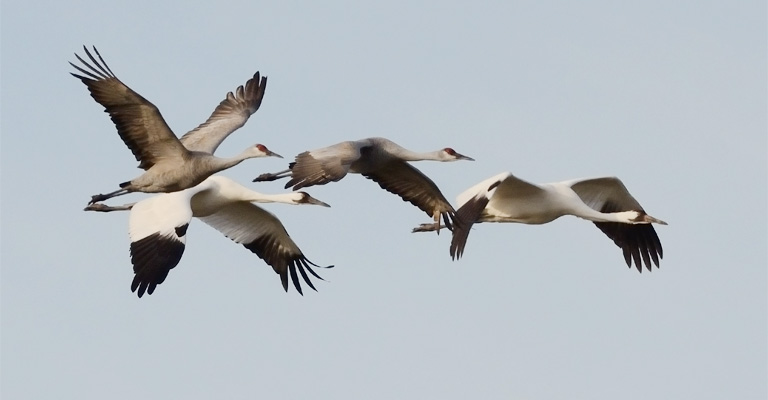
Whooping Cranes, one of North America’s most endangered birds, migrate long distances. They often fly at altitudes that put them in close proximity to wind turbine blades, increasing their risk of collisions during migration.
Short-Eared Owls (Asio flammeus)
Short-eared Owls are ground-nesting birds that frequent open grasslands and marshes. They are susceptible to habitat loss and disturbances caused by wind turbine construction and operation.
Sage Grouse (Centrocercus Spp.)
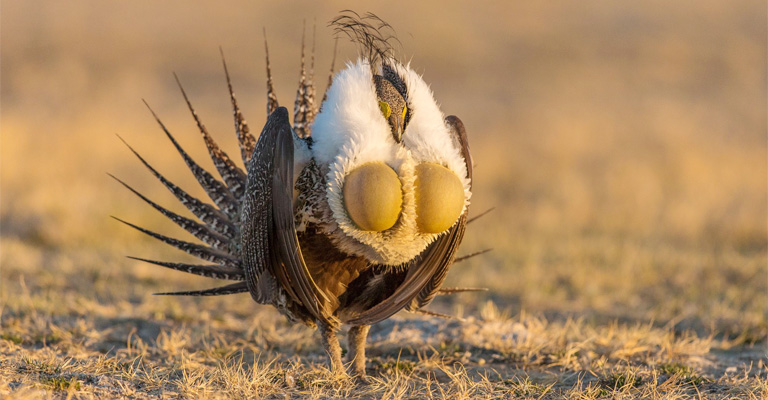
Sage Grouse are sagebrush-dependent birds that face habitat fragmentation and disturbances from wind energy development. The loss of their sagebrush habitats can impact their survival.
It’s essential to recognize that bird species’ vulnerability to wind turbines varies depending on location and specific environmental factors. Conservation efforts and careful planning are necessary to mitigate the impacts of wind energy on these and other bird species.
What Is The Impact Of Wind Energy On Bird Populations?
Wind energy is a renewable and clean source of energy that can help reduce greenhouse gas emissions and mitigate climate change. However, it also has some negative impacts on bird populations, such as:
Collision Risk
Birds can collide with wind turbine blades, resulting in bird deaths. Research from Wageningen University demonstrates that current wind park norms underestimate the consequences of excess mortality on bird populations.
Excess mortality due to wind turbine collisions can result in decreases in bird populations.
Noise Disturbance
Birds can be bothered by the noise generated by the wind turbines and their blades. The noise can interfere with the bird’s communication, hearing, and orientation. It can also cause stress and anxiety to the bird, affecting its health and behavior.
Movement Disturbance
Birds can be unsettled by the movement of the wind turbines and their blades. The movement can create visual clutter and confusion for the bird, especially when it is hunting or flying.
It can also trigger an avoidance or defensive response from the bird, making it flee or fight.
Habitat Loss
Birds can lose their habitat due to the construction and operation of wind turbines. The turbines can take up space and resources that the bird needs, such as food, water, shelter, and nesting sites.
They can also alter the landscape and vegetation of the area, reducing its suitability for the bird.
Habitat Fragmentation
Birds can experience habitat fragmentation due to the wind turbines. The turbines can create barriers or gaps that separate the bird’s habitat into smaller and isolated patches.
This can reduce the connectivity and quality of the habitat and affect the movement and dispersal of the bird2.
Displacement Effect
Birds can be displaced from their habitat due to the wind turbines. The turbines can create a zone of avoidance or exclusion around them, where the bird does not feel comfortable or safe to stay.
This can force the bird to move to other areas that may be less suitable or more crowded.
Cumulative Effect
Birds can suffer from cumulative effects due to multiple wind turbines in their range. The effects of each turbine can add up or interact with each other, creating a greater impact on the bird than a single turbine would.
This can reduce the resilience and adaptability of the bird to cope with environmental changes.
These impacts may vary depending on the species, location, design, and operation of the wind turbines. Some birds may be more vulnerable or sensitive than others, and some areas may be more important or critical than others for bird conservation.
Therefore, it is essential to conduct careful planning, monitoring, and mitigation measures to minimize the negative impacts of wind energy on bird populations.
FAQs
Why are Red Kite birds disturbed by wind turbines?
Red Kite birds are disturbed by wind turbines primarily due to the risk of collisions. Their elegant soaring flight often brings them into close proximity to turbine blades, resulting in fatal collisions.
Additionally, the noise and visual disturbances associated with wind farms can disrupt their natural behaviors, including breeding and foraging.
How do wind turbines affect Red Kite habitats?
Wind turbines can disrupt Red Kite habitats by fragmenting their preferred open landscapes. Construction activities and infrastructure can drive these raptors away from their nesting and foraging areas, causing habitat displacement and potential declines in prey species.
Do wind turbines affect Red Kite behavior?
Yes, wind turbines can significantly impact Red Kite behavior. The constant movement and noise generated by turbines can disrupt their breeding activities, lead to stress, and alter flight patterns as they avoid turbine-rich areas.
What are the ecological consequences of wind turbines on Red Kite populations?
Wind turbines can have ecological consequences on Red Kite populations by reducing their reproductive success and foraging opportunities. The disturbance to habitats and prey availability can lead to population declines and affect the overall health of these raptors.
Are there any mitigation measures to reduce the disturbance of Red Kite birds by wind turbines?
Mitigation measures include carefully planned turbine placement to avoid critical Red Kite habitats, ongoing monitoring to assess the impact, and habitat preservation efforts.
Additionally, the development of quieter turbine technologies and improved siting strategies can help minimize the disturbance to Red Kite populations while harnessing wind energy for a sustainable future.
Conclusion
The disturbances faced by the Red Kite in the presence of wind turbines underscore the intricate balance between our commitment to clean energy and our responsibility to safeguard biodiversity.
These magnificent raptors, already recovering from historical declines, are challenged by the very technology intended to reduce environmental harm. As we continue to pursue renewable energy solutions, it is imperative that we consider the impacts on our natural world.
Mitigation measures, such as strategic turbine placement, monitoring, and habitat preservation, are crucial to minimizing the harm to Red Kite populations and other vulnerable bird species.
Only by addressing these challenges can we hope to achieve a future where clean energy coexists harmoniously with the splendid creatures of our planet.